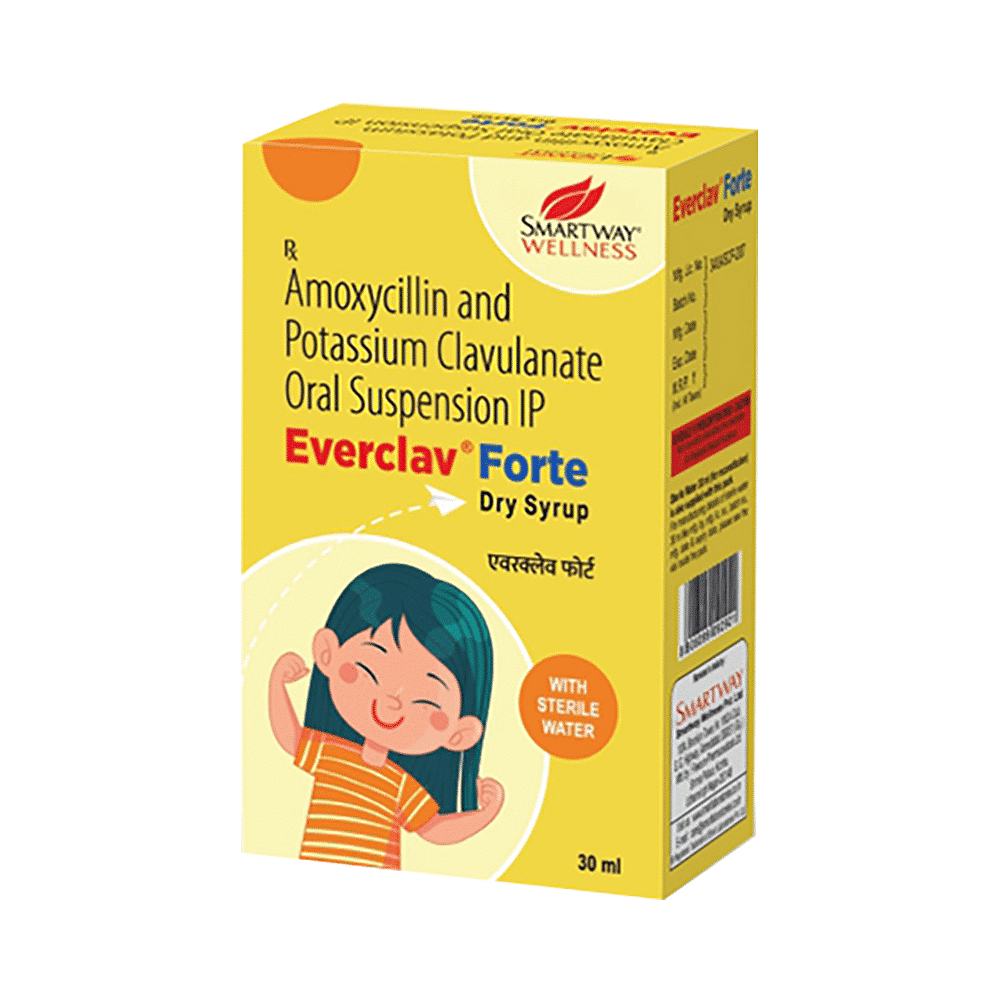
Sudox-DS Dry Syrup
Manufacturer
Sunroxx Pharma
Salt Composition
Amoxycillin (400mg) + Clavulanic Acid (57mg)
Key Information
Short Description
Sudox-DS Dry Syrup is an antibiotic used to treat bacterial infections in various parts of the body, including the ear, nose, throat, chest, lungs, teeth, skin, and urinary tract.
Dosage Form
Oral Suspension
Introduction
Sudox-DS Dry Syrup is an antibiotic medicine designed to combat bacterial infections in multiple areas of the body such as the ear, nose, throat, chest, lungs, teeth, skin, and urinary tract. It is particularly effective against bacteria that have developed resistance to other treatments, making it a valuable option for treating resistant tuberculosis. The medication contains two active agents, amoxycillin and clavulanic acid, which work together to inhibit bacterial growth and survival. While generally safe, it is crucial to complete the entire course of antibiotics to prevent the bacteria from multiplying again or becoming resistant. Always consult a healthcare provider before starting any new medication.
Directions for Use
Administer the prescribed dosage of Sudox-DS Dry Syrup to your child as directed by the healthcare provider. Ensure the entire course is completed even if symptoms improve.
How it works
Sudox-DS Dry Syrup contains amoxycillin and clavulanic acid. Amoxycillin prevents the formation of the bacterial cell wall, essential for bacterial survival, while clavulanic acid inhibits beta-lactamase, an enzyme produced by resistant bacteria, making the combination effective against various infections.
Quick Tips
Your child must complete the entire course of antibiotics to prevent bacterial resistance. Eating citrus fruit or sipping water/fruit juice may help with the bitter taste. Encourage your child to drink plenty of water if diarrhea develops. Never give Sudox-DS Dry Syrup unless prescribed by a doctor. Do not use this medicine to treat viral infections like the common cold or flu. Check the expiry date before use and discard expired medicines. Stop the medication immediately if your child develops an itchy rash, facial swelling, or breathing difficulty and consult a doctor.
Related Medicines

Mox CV DS CP Oral Suspension Delicious Strawberry

Moxclav DS 457mg Oral Suspension

Moxycare CV Duo Dry Syrup

Joymentin DS Oral Suspension

Everclav Forte Dry Syrup

Ikclav DS Dry Syrup

Pteron-A Forte Oral Suspension

Kavmox-DDS Dry Syrup

Clavoxa-Forte 457mg Dry Syrup

Xocil CV Dds Oral Suspension
Frequently asked questions
Can other medicines be given at the same time as Sudox-DS Dry Syrup?
Sudox-DS Dry Syrup may interact with other medications. Inform your doctor about all other medications your child is taking before starting Sudox-DS Dry Syrup, and consult them before administering any medicine to your child.
Can I get my child vaccinated while on treatment with Sudox-DS Dry Syrup?
Antibiotics usually don't interfere with the ingredients in vaccines or cause a negative reaction. However, children undergoing antibiotic therapy should avoid getting vaccinated until they recover from the illness. Once your child feels better, a vaccine can be administered after consultation with their healthcare provider.
Which lab tests may my child undergo while taking Sudox-DS Dry Syrup on a long-term basis?
Periodically, your doctor may order kidney and liver function tests when administering this medication long term to monitor your child's condition.
Can I give a higher than the recommended dose of Sudox-DS Dry Syrup to my child?
No. Giving a higher than recommended dose can increase the risk of side effects. If your child experiences worsening symptoms, consult your doctor for re-evaluation.
Can I stop giving Sudox-DS Dry Syrup to my child when the symptoms are relieved?
No. Do not stop Sudox-DS Dry Syrup unless you've finished the entire treatment course, even if symptoms improve. Symptoms may ease before the infection is fully cured, so continue the medication according to the prescribed plan.
Can the use of Sudox-DS Dry Syrup cause diarrhea?
Yes. Sudox-DS Dry Syrup can cause diarrhea as it is an antibiotic that kills harmful bacteria. Additionally, it may affect the beneficial bacteria in your child’s stomach and trigger diarrhea. If your child experiences diarrhea, encourage them to drink plenty of fluids. Consult your doctor if the diarrhea persists or you notice signs of dehydration like less frequent urination with dark-colored, strong-smelling urine. Do not give any other medications without consulting a doctor first.
Do all viral common colds result in secondary bacterial infection?
Most viral colds do not lead to bacterial infections. Antibiotics should only be used after consultation with your child’s healthcare provider if there are signs of a secondary bacterial infection. If you see symptoms like fever, swelling, or pus discharge, seek immediate medical attention.
The mucus coming out of my child's nose is yellow-green. Is it a sign of a bacterial infection?
Yellow or green mucus in the nose is not a sign that antibiotics are needed during a common cold. During a common cold, mucus thickens and changes color from clear to yellow or green. These symptoms typically last for 7-10 days.
Is there any sign which shows that my child needs immediate medical attention?
Seek immediate medical attention if your child experiences serious allergic reactions (breathing difficulties, skin rashes), gastrointestinal infections (diarrhea), and liver damage (weakness, pallor, vomiting). These side effects are rare but require expert care.


